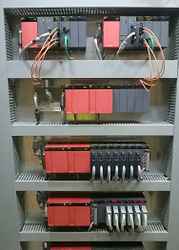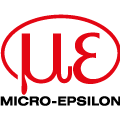
Posted to News on 22nd Oct 2015, 09:50
Waterworks modernisation supports regional economic regeneration
A water treatment works (WTW) in South Wales has had its control system completely upgraded, without disruption of supply to the population of around 70,000 people it serves. Dwr Cymru Welsh Water (DCWW) is unique in the utility sector as it is a company without any shareholders. All gains go to customers so that services are maintained and improved and customer bills are kept low. In the next regulatory period (2015-2020), DCWW will invest 1.5billion to maintain and improve its assets and services.

The Nantybwch WTW, owned and operated by DCWW, has been supplying potable water to the towns of Tredegar, Ebbw Vale and Bargoed in South Wales since the works was first built in 1993. The original control system needed upgrading and local framework system integrator Oasis Software Solutions (OSS), from nearby Monmouth, was brought in to help with design, installation and commissioning. It was realised that enhancements could be made on multiple levels with a new control system, for which Welsh Water selected state-of-the-art Mitsubishi Electric technology.
The towns served by Nantybwch are expected to see population growth in the coming years, something the water supply needs to be able to accommodate. Once a centre for heavy industry, when the area's main steelworks closed many local businesses also began to struggle. A lot of people were forced to leave the area to look for work elsewhere.
More recently, several regeneration initiatives have helped build the foundations of a new, diversified economy. These include the creation of The Environmental Resource Centre, retail and commercial developments, a major new hospital, cultural and sporting facilities. There are even proposals for a Grand Prix standard motor racing circuit. Housing developments including several eco-home initiatives are also underway, helping to attract people into the area.
Nantybwch WTW usually supplies around 20 megalitres of potable water per day, but has a maximum design capacity of 30 megalitres per day. Its catchment area is the mountainous eastern side of the Brecon Beacons National Park.
Most water treatment processes tend to be similar, but each has to be adapted to account for local conditions, perhaps filtering out certain minerals or organic compounds. At Nantybwch, the quality of the water held in the reservoir is good, so a straightforward process is used. The primary treatment is based on dissolved air flotation (DAF), followed by two stages of rapid gravity filters.
Robust and reliable
While the process is fairly simple, the water industry likes to ensure a robust and reliable service to its customers, so designing redundancy in the control systems was an early decision. In fact, the architecture of the final design provided a system that comprises of two pairs of redundant Mitsubishi Electric Q25 programmable logic controllers (PLCs) in the main works and a Q06 PLC in the pumping station. Each redundant system has two central processor units (CPUs) and a mix of traditional I/O and remote I/O. The remote I/O is connected in a number of different networks, some using fibre optic MELSECNet/ H and others using Profibus.
Neil MacDonald, Managing Director of Oasis Software Solutions explains: "The mixture of technologies used for the remote I/O solutions demonstrates the flexibility and versatility of the Mitsubishi Electric Q Series product. Where the system required low density I/O and a Profibus network already in place to interface a number of drives, a slice I/O solution was deployed. For critical areas of the process, a redundant MELSECNET/H solution was provided with the capability of utilising high density I/O modules, connected to a high speed, high integrity, fibre optic network. A fibre optic Ethernet ring was installed to provide peer to peer PLC communications and SCADA networking, offering a modern, future proof interface adhering to the DCWW AS427 Industrial Network Communications standard."
Mitsubishi Electric Q Series PLCs are designed to provide a high-functionality platform for automation, suitable for a wide range of applications across the full spectrum of industrial sectors. Of particular interest to the water industry, they can offer a high level of system redundancy, which ensures complete immunity to process interruptions caused by power or system failures. This is achieved by using a fully redundant architecture, which duplicates processors and network links. Hot-swap capability provides an operational level of redundancy.
The dual redundant CPUs (control and standby) mean that any failure of the control CPU causes immediate transfer of control to the backup, preventing system failure or interruption. Synchronisation of up to 100,000 words of process data is possible between CPUs per scan.
Switchover time is typically around 20-40ms, ensuring a "bumpless' transfer. Because the CPUs reside on physically separate racks, the control CPU can be replaced while the backup maintains system operation. Most parts are interchangeable with standard Q Series systems, which helps to control both purchase cost and total cost of ownership.
Other aspects of the project that contributed to the overall improvement included upgrading and augmenting existing instrumentation, replacing existing variable-speed motor drives, modifications to improve the water treatment process, replacing local loop controllers and panels and a new SCADA (supervisory control and data acquisition) system.
Energy savings
Energy efficiency can be significant in the Water and Wastewater Industry as plant is operating 24/7. Energy tariffs can change on a 30-minute basis, so energy consumption is constantly monitored and even small savings can add up. Savings can be made by trimming motor speed to optimum levels and there are often options for switching some motors from running constantly to intermittent operation. In most water projects the overall energy savings are predictable and can offset the capital costs of the installation.
The initial design and planning stage of the project ran smoothly, and the decision to go for a Mitsubishi Electric system meant many of the supply and integration issues were easily addressed.
Work started on site in summer 2013 and the plant was running entirely on the new system by mid March 2014. Neil says: "There is a lot of satisfaction knowing that we have played a part in the regeneration of the regional economy of the Heads of the Valleys,"
To learn more about control systems from Mitsubishi, please go to gb3a.mitsubishielectric.com.
Want the latest machine building news straight to your inbox? Become a MachineBuilding member for free today >>

















